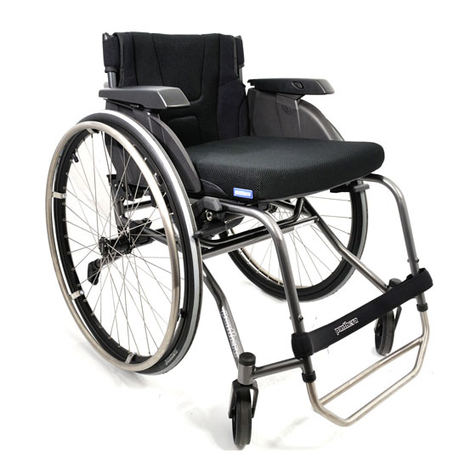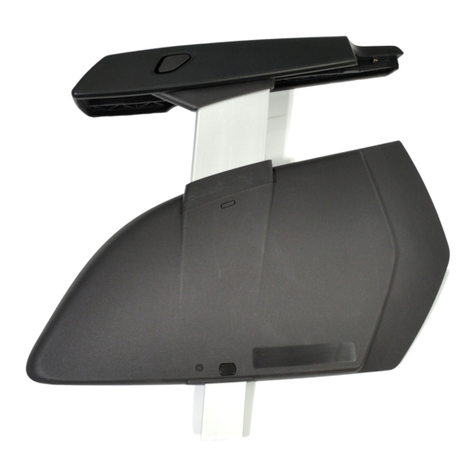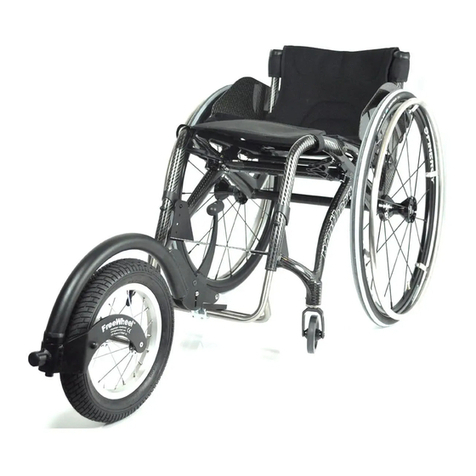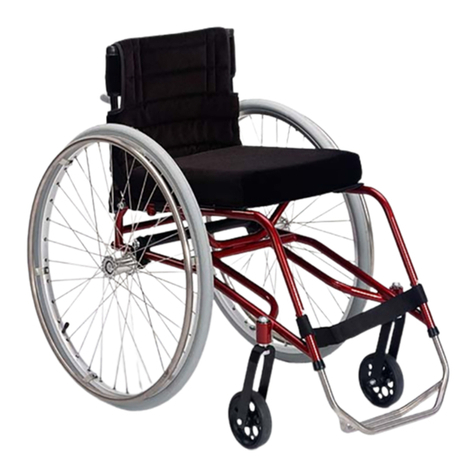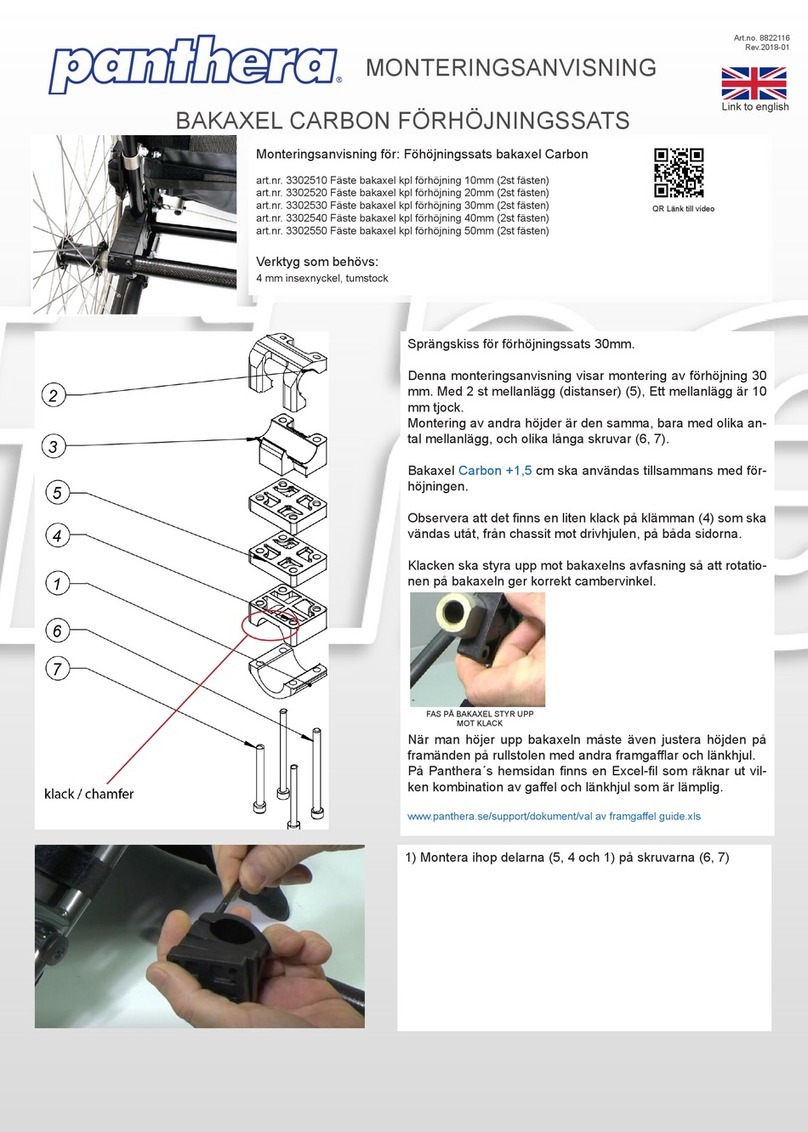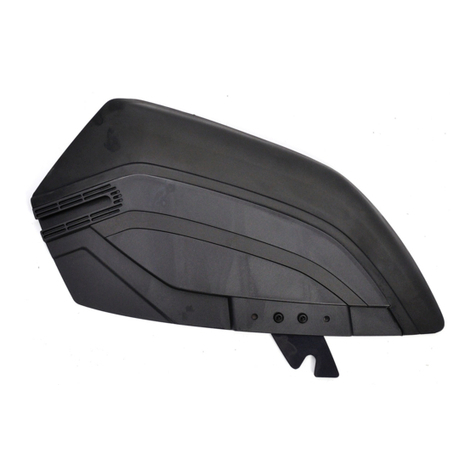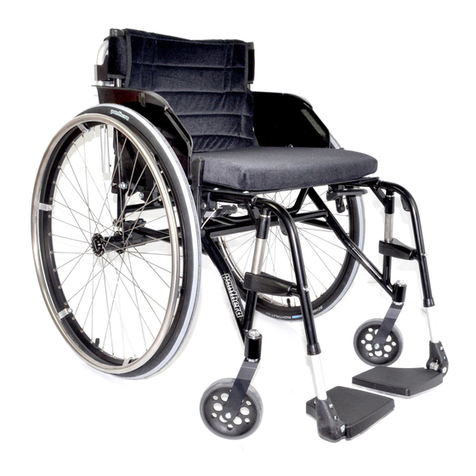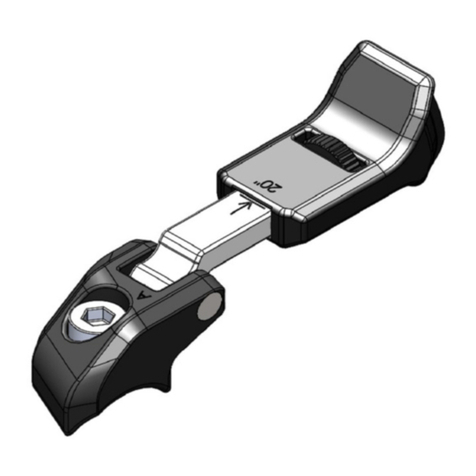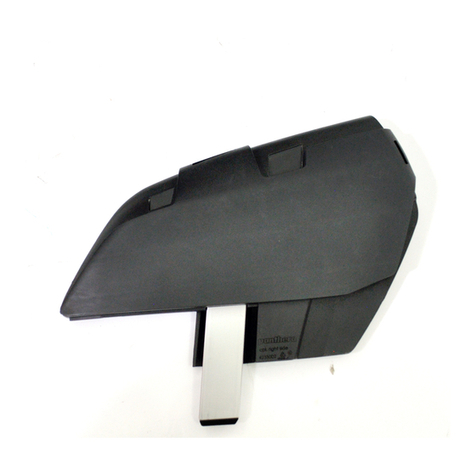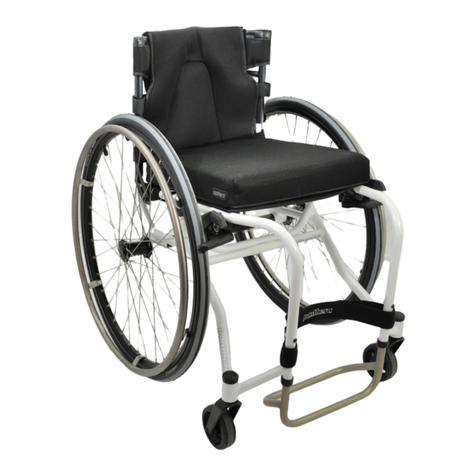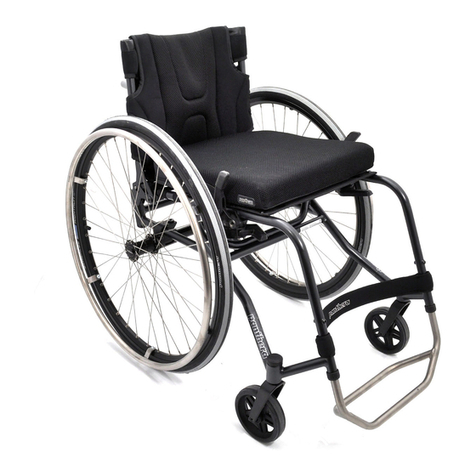Instructions for use Micro Instructions for use Micro
3 4
3) Height of the footrest
The footrest (see figure 3) can be adjusted up or down by
changing the hole for the attachment. Remove the screws
attaching the foot plate. You will now be able to move
the footrest up or down to one of the alternative height
positions. You should have the footrest at a height which
provides support for the thighs on the seat at the same
time as the feet are supported on the footrest.
4) Length of the footrest
The footrest can be turned round so that the supporting
plate faces backwards or forwards. Remove the two
screws attaching the footrest. Turn the plate round and
replace and tighten the screws.
2) Tension of the seat upholstery
The rear section of the seat upholstery can be made
tighter or looser by adjusting the Velcro band under-
neath the seat as shown in figure 2. This allows you
to vary the sitting height by about 2 cm up or down. Figure 2. Band for tighte-
ning seat upholstery.
Figure 3. Screw for the footrest.
Adaptation
When adapting the chair to suit the child’s sitting position and provide the desired
mobility, it is important that you make the following adjustments in the correct
order. First, adjust the sitting position and after that adjust the balance of the chair.
This sequence is important since when you change the sitting position in the chair
the balance of the chair is also affected.
You should make these adjustments in the following order:
1) Length of the seat upholstery
2) Tension of the seat upholstery
3) Height of the footrest
4) Length of the footrest
5) Tension of the back upholstery
6) Balancing the wheelchair
1) Length of the seat upholstery
Lift the flap on the topside of the seat and move
it backwards or forwards along the frame tubing
till the seat is of suitable length. Re-attach the
flap to the Velcro on the topside of the seat.
5) Tension of the back uphol-
stery
The back upholstery can be tightened or loosened
by adjusting the Velcro band at the back.The back
upholstery also has a flap fastened with Velcro
under the seat upholstery. This can be moved back
or forwards to obtain the required tension in the
lower section of the back upholstery (known as
the seat bucket). By adjusting these things you
can form the lower part of the back upholstery to
suit the shape of your back and obtain good sup-
port for your lower back. Start by loosening the
band and sit as far back in the chair as you can.
Then tighten the band to give you good support.
If it feels as though you are not sitting far back
enough in the chair it may be because the back
upholstery flap is fastened too far forward under
the seat. Relax this flap and move it back.
Figure 4. Back upholstery.
Figure 5. Back axle attachment.
6) Balancing the wheelchair
The balance of the wheelchair can be ad-
justed by moving the rear wheels back or
forwards (see figure 5). The further forward
you position the rear wheels the more the
chair will be ‘rear balanced’. This makes the
chair easier to manoeuvre and it will also
be easier to tip up onto the rear wheels, for
instance, when negotiating curbs, thresholds
and so on. The chair should not be balanced
too far to the rear because this may feel
unstable due to increased risk of tipping
backwards. It is important that you take
time trying out a balance that suits the body
and driving technique so that you adapt the
chair to be as easy to drive as possible.
